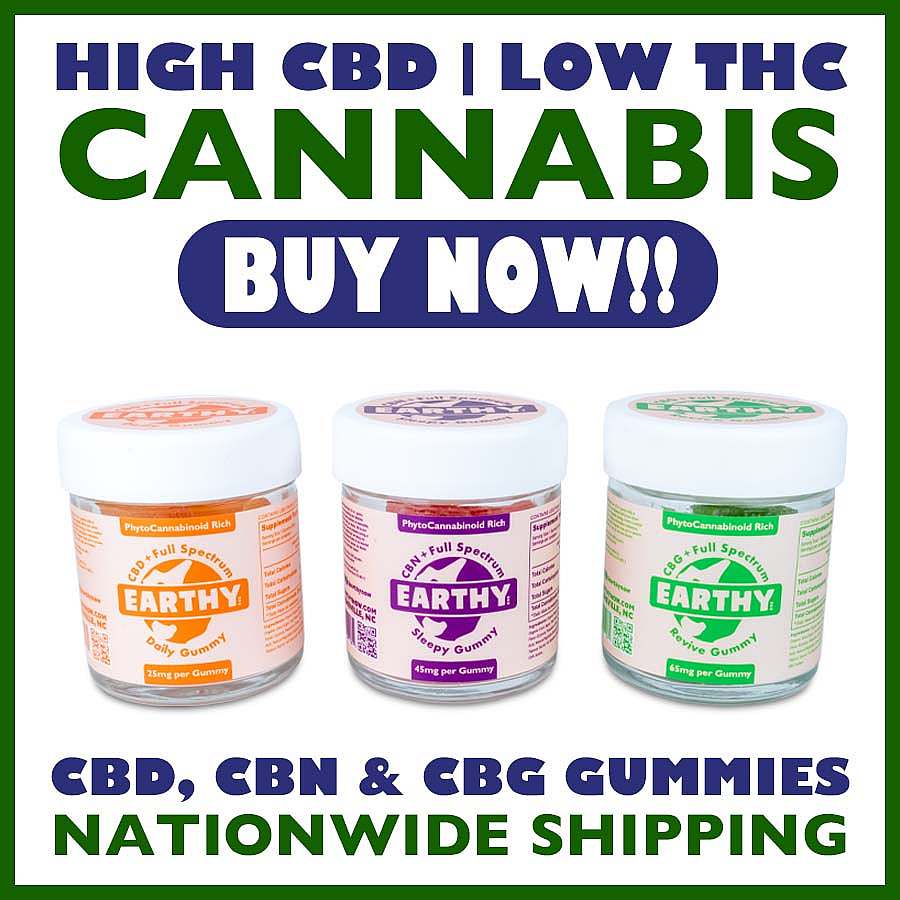How To Use CBN Gummies for Optimal Benefit
While it may seem obvious how to use CBN gummies, it’s important to use them correctly in order to get the most out of them. As you navigate the many benefits of CBN gummies, you may be surprised by some of these helpful tips. For instance, where you place them in your mouth will affect absorption rates, onset, duration, and intensity of CBN. Keep reading for the inside scoop on the CBN gummy game.
What is CBN?
One of the many cannabinoids in cannabis, cannabinol (CBN) has recently garnered a loyal following among cannabis enthusiasts. Though not yet as studied or as well-known as CBD or THC, CBN offers its own host of attractions.
CBN forms when THC breaks down due to exposure to heat, air, or light. “This is why higher levels of CBN can be found in aged, dry cannabis,” says Eric Adams, a manufacturer of products with alternate cannabinoids. But CBN doesn’t cause the intoxicating psychoactive effects associated with THC [1].
Learn more in the Guide to CBG and CBN
Benefits of CBN
Though research on CBN is scarce when it comes to human trials, some preclinical studies suggest CBN may be beneficial in several ways.
A recent animal study encouraged researchers that CBN may have usefulness for humans, yet clinical studies have yet to test this theory [2].
Additionally, anecdotal reports indicate that CBN may serve to improve rest. While more research is needed, CBN may in fact act synergistically with other cannabinoids and terpenes to cause helpful effects through what is known as the entourage effect [3].
Therefore, the peace-inducing effects that some people claim to experience with CBN may be related to the ways in which the cannabinoid interacts with the other compounds in the cannabis plant, or other factors. This cannabinoid interaction occurs in the body’s endocannabinoid system.
What is the endocannabinoid system?
Though many of us have heard of chemical transmitter systems like the central nervous system, fewer have heard of the more recently discovered endocannabinoid system (ECS). This extensive bodily system is critical for almost every aspect of our functioning and has a unique relationship with the cannabis plant [4].
The ECS comprises a complex network of chemical signals and receptors that exist throughout the human brain and body. These “cannabinoid” receptors (including CB1 and CB2 receptors) are stimulated by cannabinoids: either endocannabinoids (made by our body) or phytocannabinoids (made from plants).
Each type influences our bodily functions, essentially turning up or down signal activity and making related adjustments about things like hunger, temperature, or alertness.
In this system, our natural receptors get stimulated by its endocannabinoids: molecules that have a structural similarity to molecules in the cannabis plant. These tiny cannabis-like molecules float through our brains and bodies, affecting our sensations and perceptions.
Likewise, the effects of the cannabis plant occur when cannabis molecules (cannabinoids or phytocannabinoids) attach to our bodies’ ancient cellular machinery and engage with the cannabinoid receptors.
CBD, THC, and CBN are only three of the hundreds of cannabinoids in the cannabis plant that interact with the ECS when they are consumed [4].
What’s the difference between THC, CBD and CBN?
THC, CBD and CBN are cannabinoids that interact in unique ways with the ECS. For example, THC is a psychoactive cannabinoid that elicits anything from a sense of euphoria or relaxation in some people to anxiety in others.
CBD, on the other hand, is non-psychoactive and has its own set of benefits separate from THC [5].
CBN can be understood as a different cannabinoid, likely more similar to CBD than THC, with certain mood-enhancing effects of its own.
Thus, because of the relaxation enhancing effect of CBN, people use CBN products as a natural way to find relaxation and rejuvenation, though scientific research has yet to substantiate these claims [5].
Does CBN get you high?
People may feel “high” after using THC products, but the effects of CBN are a milder sort of journey which seems to encourage relaxation.
The strength of the effects of THC or CBN or any cannabinoid on a particular person will differ depending on a few things: dosage level, body weight, food or other substances in the system, and their experience/tolerance level based on individual body chemistry [5].
What does “hemp-derived” mean?
Hemp-derived means that a given product is made from hemp— sometimes called industrial hemp. The 2018 Farm Bill (see next section) established new federal legal definitions and rules for hemp. In short, the definition state that the hemp plant and “any part of that plant, including the seeds thereof and all derivatives, extracts, cannabinoids, isomers, acids, salts, and salts of isomers, whether growing or not, with a delta-9 tetrahydrocannabinol concentration of not more than 0.3 percent on a dry weight basis” may be used for production, sales, and transport.
Hemp plant derivatives include cannabinoids like CBN, CBG, CBD, Delta-8 THC, Delta-9 THC, and Delta-10 THC. These and other cannabinoids are federally compliant for use in myriad products—including gummies— when their percentages contain less than 0.3 THC [6].
Full Spectrum Gummies Review: Best Low THC Gummies
Are CBN Gummies federally legal?
For many years in the U.S., cannabis was illegal according to federal law, whether or not it contained Delta-9 THC: the main psychoactive chemical that occurs naturally in the plant. In the 2010s, the United States Congress enacted two groundbreaking pieces of legislation called “Agricultural Acts,” commonly known as the Farm Bills.
These Bills recognized that hemp with very low Delta-9 THC concentration is distinct from higher-THC cannabis and legalized its use. In addition to the hemp plant, hemp extracts and hemp products, including THC isomers, are also allowed by the Farm Bills [6].
The explosion of hemp farming
Hemp’s commercial resurgence came after the 2014 Farm Bill removed hemp from the Drug Enforcement Agency (DEA) list of Schedule 1 substances. The Bill made hemp federally legal and allowed long-forbidden research into hemp-derived cannabinoids to begin in earnest.
The 2018 Farm Bill expanded on this, allowing people to produce, sell, and consume hemp-derived products, making it clear to legal experts that all other plant materials and substances derived from legally-defined hemp (including cannabinoids such as CBD and CBN) are also federally-compliant [6].
Since then, the federal legislation defines cannabis plants with less than 0.3% of Delta-9 THC per dry weight as hemp plants and allows hemp production and consumption in all 50 states. On the other hand, a plant with more than 0.3% Delta-9 THC per dry weight is defined as marijuana which federal law still treats as a controlled substance on the DEA’s Schedule 1 list.
Nonetheless, many states now allow medical use and/or adult recreational use of marijuana containing much more than 0.3% Delta-9 THC.
Hemp: a freed cannabis crop
The Farm Bill, drafted by the federal government, uses this definition:
Hemp–The term `hemp’ means the plant Cannabis sativa L. and any part of that plant, including the seeds thereof and all derivatives, extracts, cannabinoids, isomers, acids, salts, and salts of isomers, whether growing or not, with a delta-9 tetrahydrocannabinol concentration of not more than 0.3 percent on a dry weight basis [6].
Most states passed similar laws in the year or years following the Farm Bill’s enactment while adopting similar definitions of hemp. This resulted in the widespread commercialization of hemp products that are not considered controlled substances by the DEA at the federal level.
What’s the difference between full-spectrum and broad-spectrum?
Full-spectrum cannabis products utilize all of the cannabinoids and compounds of the cannabis plant, including up to 0.3% THC per dry weight in federally compliant hemp. The entourage effect is believed to be related to the complete panoply of cannabis compounds working together.
In contrast, broad-spectrum products contain some or all of the same compounds as full-spectrum products, but they do not contain THC [7].
What is CBN distillate versus CBN isolate?
CBN distillate is a distilled extract that contains high concentrations of CBN. While distillate is purer than a crude extract, it still includes some other cannabinoids, terpenes, and compounds that are naturally present in hemp flowers.
CBN isolate, in contrast, contains that particular cannabinoid only, excluding all of the other cannabinoids and compounds [8]. CBN isolate is what is used in a product like Earthy Now’s Sleepy CBN Lozenges.
When to consume CBN gummies
CBN gummies can be taken any time of day, and even multiple times a day, depending on personal preferences. Each person’s desired dosage and maintenance level is unique to their own system. If you are unsure what your CBN needs are, most users find success by trying smaller amounts at first and moving on to higher amounts until they reach their desired effects. It is also a good idea to ask your health care provider for advice.
Many people enjoy taking CBN gummies for relaxation, yet these effects have not been backed by science as of yet. Still, the interplay among cannabinoids, terpenes, and flavonoids may influence the body in this way through the entourage effect if the CBN gummies are consumed via full-spectrum cannabis products.
A good rule of thumb for when to consume CBN gummies is about 30 to 60 minutes before bedtime, which may encourage a more restful experience. Adding CBN to your nightly rituals can additionally support the expectation and routine of rest.
Maintaining optimal CBN levels
A CBN gummy can be taken at the same time (or times) each day to maintain a consistent level of CBN in your body. Again, the amounts and frequency of CBN needed will be different for different individuals.
For example, a person taking CBN for relaxation might begin taking it in the evening, while others who benefit from its effects during waking hours may schedule regular doses throughout the day.
Consumption methods & unique effects
There’s no single answer for which CBN consumption method is best because it depends on the person, the product, and the time and place. There are many different CBN products on the market, including oils, gummies and lozenges.
Consuming CBN gummies can be both fun and convenient. However, different ways to consume gummies and other edibles affect the outcome.
How to Consume CBN Gummies: the most bioavailable consumption method
The secret to achieving the best effects and benefits of a CBN gummy is to let the gummy fully dissolve in your mouth rather than swallowing it in undissolved pieces. Let’s look at why that is.
Faster, stronger, better effects
When sublingual or buccal administration of CBN gummies is practiced, the cannabinoid is absorbed faster and more efficiently than with swallowing. This is because the cannabinoid isn’t metabolized by the liver before hitting the bloodstream [10].
Sublingual and buccal administration
Sublingual and buccal administration are two methods of consuming CBN products by mouth. Sublingual administration involves having the dissolved product under the tongue, where it is then absorbed directly into the bloodstream through the tissue.
On the other hand, Buccal administration involves having it between your gums and cheek, where it is absorbed likewise. [9].
This practice doesn’t mean you have to put the gummy under your tongue or in your cheek. You can simply let it dissolve fully in your mouth to get much of the optimal effects. Nonetheless, the areas under the tongue and the cheeks can absorb various active substances into the bloodstream more readily.
Thus, when you let it dissolve this way, the CBN can enter your bloodstream and metabolize faster than if it goes through your digestive system. Still, it’s perfectly fine to swallow pieces of gummy, just know that the timing and strength of the CBN effects may be more variable.
How many gummies?
While products generally have a suggested dosage listed on each package, the strength of the effects on a particular person will be different depending on a few things: amount consumed, body weight, food or other substances in the system, and personal body chemistry. Generally speaking, it is recommended that you start with the lowest dose and gradually increase it until you reach satisfactory results.
Newer users can easily have a lighter amount by cutting gummies in half or quarters. More experienced users can take multiple gummies for stronger results. Personal preference is the key.
CBD Gummies Review: Best CBD Gummies
Gummies the right way
Though gummies are always deliciously easy, they work better when used correctly. Whether you wish to try CBN gummies for relaxation or seek to compliment your CBD gummies with a dose of CBN, use the tips in this article to maximize your experience of CBN gummies to get the most out of your purchase. Ready to try? Check out Earthy’s excellent selection: Best Gummies
Medical Disclaimer / Legal Disclaimer – Information is provided for educational purposes. It does not and is not intended to constitute legal advice or medical advice. We attempt to be accurate and up-to-date, but the legality of cannabinoids and the science of cannabis are evolving. The author is neither a legal professional nor a medical expert. Before buying or using any products, you should check with your local authorities and medical provider
References
- Cultivated Remedies: What is CBN?
- Forbes: What is CBN?
- Wikipedia: Entourage Effect
- Harvard: The Endocannabinoid System: Essential and Mysterious
- Web MD: CBD and CBN: What’s the Difference?
- HIA Position Statement on Delta 8 and Hemp Cannabinoids
- Healthline: Full-Spectrum vs Broad-Spectrum
- CBN Distillate vs CBN Isolate
- Healthline: Sublingual and Buccal Medication Administration Comparison
- Science Direct: Pharmokinetics






